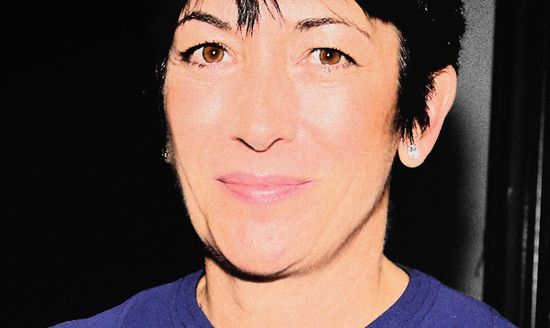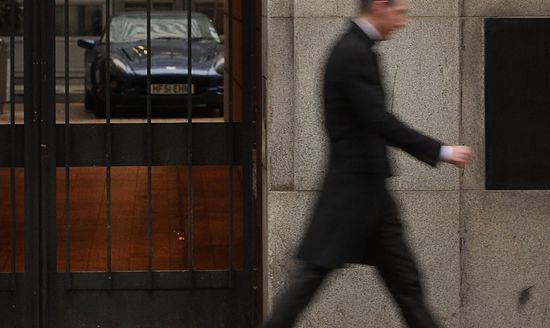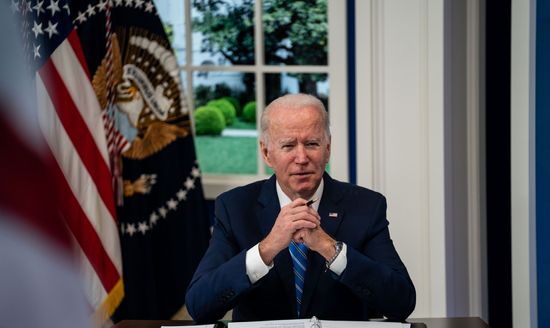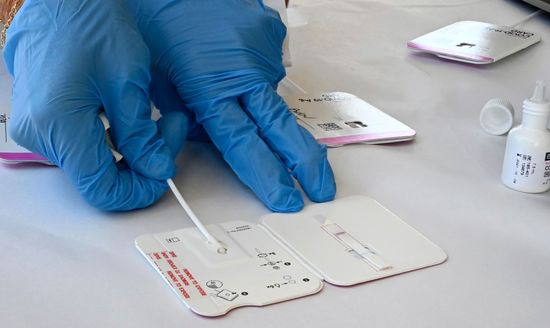| Ben: On Monday, the CDC released new COVID guidelines advising that people who have tested positive need to isolate for only five days, down from ten, and that they can return to the general population if they’re feeling better at that point — no negative test needed. That last point especially has drawn a lot of criticism. |
| This is obviously guidance calibrated for the new reality of Omicron, which is the prime factor in record COVID caseloads (more than 267,000 confirmed Tuesday — likely a vast undercount) and in labor shortages caused by widespread positive tests. Omicron appears less severe than Delta, and most vaccinated people who have contracted it experience mild symptoms. Still, even if ten days of quarantine isn’t realistic or wise anymore, the CDC is really sort of turning on a dime here, as has unfortunately been its pattern throughout the pandemic. As Aaron Carroll put it in the New York Times, “It seems that even at this late date,” the organization is “trying to appease everyone and therefore is pleasing no one.” What do you make of the new rules? |
| David: They seem obviously poorly thought through and messaged. The contradictions with early guidance designed to control spread above all are obvious, as are the limitations since — as many people have pointed out with photographs on social media — you can absolutely remain infectious longer than five days (my toddler daughter recently was antigen-positive for nine straight days and infected our infant daughter only on day seven). Mask-wearing — emphasized by Anthony Fauci in his illuminating interview last night with Chris Hayes — can make a difference, but how much of a difference is an open question. The celebrated Bangladesh mask study found that a 300 percent increase in mask-wearing produced only a double-digit reduction in disease, and a recent study found that mask-wearing on flights reduced transmission by just 30 percent. And the science the CDC pointed to as justification for the reduced isolation period — which seems obviously motivated by workplace concerns, not science — comes from earlier variants, not Omicron, which we already have reason to suspect confers a longer shedding period than Delta did. |
| On the other hand, the CDC is in a very tough spot, as are we all. Omicron is spreading like wildfire. We are poised to break case-growth records set last year during the winter surge; in many places, we’ve already broken them, sometimes by huge margins. The pandemic policies developed to respond to a worst-case surge of that scale will be simply inadequate to deal with a much bigger one, as I wrote a few weeks ago. But while there are a lot of reasons to believe the ultimate toll of Omicron will be proportionally much smaller than earlier waves, it is not at all clear that the raw carnage will be any smaller at all — hospitalizations are approaching last year’s peak, and a hospital-capacity tracker developed by Jeremy Faust and William Hanage already shows some parts of the country at or past conventional definitions of capacity with Omicron only just beginning to show up in admissions. Which means it is almost certainly not responsible to move on from controlling spread and radically rethinking quarantine and isolation policies. (This is what South Africa has decided to do — somewhat remarkably suspending isolation and contact-tracing rules — but the country did so only after its Omicron wave peaked, which ours hasn’t.) |
| So what did the CDC do? It pushed what seems obviously a compromise. It’s unable to secure enough tests for every American to use to exit isolation periods but is reluctant to allow existing policies to functionally turn off the whole country for a month. It’s unwilling to say we should move on from controlling spread but also unwilling to say the earlier restrictive policies should continue to apply. |
| Ben: To what extent do you think our testing fiasco — still-hard-to-find at-home tests that are expensive when you do find them, long lines and turnaround times at clinics, etc. — played a part in this CDC decision? |
| David: It’s hard to know for sure, but it doesn’t seem likely to be a coincidence that we are already running up against the limits of our testing capacity and have done a very poor job throughout the pandemic of training the country to trust rapid tests (though supply of those is also catastrophically limited, unfortunately). There have been some important questions raised recently about just how effective mass testing is in the face of Omicron given how rapidly the disease is spreading even in those countries with quite robust testing regimes and those quite supportive of rapid at-home testing. But in the U.S., we don’t even really have the tools to run the experiment. |
| In general, it seems unwise to treat this case surge as equivalent to the others in terms of proportional severity. On the other hand, it seems equally unwise to act as though a death toll approaching or exceeding last winter’s is a “mild” outcome simply because it would be accompanied by much higher numbers of light or asymptomatic infection. |
| Ben: Plus, even if Omicron is inherently milder, the CDC’s updated estimate of COVID spread in the U.S. shows that Delta is still alive and kicking in many places, so we’re still living in both worlds. (The fact that its initial estimate was wildly off is another not-terrific moment for the agency.) |
| David: Yes, Delta, which has been far more brutal in the U.S. than across Europe, is still raging here. A quick glance at, say, the Times’s COVID dashboard suggests a huge decoupling of cases from deaths — cases are up 200 percent, and deaths are actually down. But there’s a lag with hospitalization and death, and given the growth of Omicron, those deaths are almost all from infections before the new variant really took off. One worrying possibility is Delta will continue, and continue to be brutal, after the Omicron wave crashes, almost like two parallel pandemics — though one early and very small study from South Africa published yesterday suggests Omicron gives at least some immune protection against Delta, which means exposure to the new variant may to some degree help protect against other strains including future ones. |
| And Omicron does appear less severe overall; we have enough data from enough different places to say that pretty definitively. But how much less severe is an open question in part because it’s tangled up in a lot of other issues — levels of immune protection, local demography, the possibility that the strain is spreading preferentially in the already immune. Most of the studies have suggested reductions between one-quarter and three-quarters compared to Delta, which is quite significant, though that suggests Omicron may still be as lethal as the “wild type” strain first identified in Wuhan. Perhaps the bigger game changer appears to be how much more immune protection there is — in South Africa, in the U.K., in Denmark, even here. But it is worth keeping in mind that with Delta, the U.S. lagged far enough behind those other countries that our Delta wave was far more brutal. Omicron may well prove dramatically less severe than Delta, but the pattern could still hold in which outcomes in Europe will be much lighter than those here. |
| Ben: If that South Africa study you mentioned is replicated, it would be a huge deal, right? It seems like something that could really hasten the end of the pandemic, or at least hasten the slide into endemic-ness. |
| David: It makes some of the darker possibilities for an Omicron endgame — that it would have no effect at all on the future course of the pandemic — seem a lot less likely. But while it is encouraging, it is also a very small study (15 people), conducted in a lab rather than the real world, and it shows a significant but not enormous effect on immunity. Assuming it’s replicated, it would mean that a good baseline expectation is probably that Omicron gives some protection against other variants (more than those variants offered against Omicron) without meaning an Omicron infection would make it impossible to get ill with another variant. |
| Ben: Still, public health agencies are clearly in a tough spot, as you said. It’s not always comfortable to talk about this stuff in cold economic terms, but if this wave continues for long, we could be looking at, say, a million cases a day (France had more than 200,000 yesterday, about the equivalent of a million here), which could cause a lot more logistical chaos than is currently happening. |
| David: I wouldn’t describe it as just an economic crisis. I think there’s a possibility for a pretty far-reaching social crisis — serious staff shortages are likely to be pretty widespread at least in the short term. The length of the Omicron wave in South Africa is encouraging here, and there are signs waves in Europe won’t be that long lasting, either. But as long as the wave continues here, we may see enough people testing positive and isolated that, even for a shortened five-day period, it could really throw a lot into disorder. |
| Ben: That brings us to the social institution that, other than hospitals and transit, seems most essential to keep up and running: schools. Almost nobody wants to return to the days of remote learning even temporarily. But it also seems exceedingly difficult to keep positive cases among kids to a very low number as was possible with other variants. Anticipating this, New York City has refined its COVID approach. It will no longer quarantine entire classrooms when one person tests positive and will institute a “test to stay” rule. Does this sort of policy make the most sense going forward? |
| David: Again, it’s hard to know what a truly good policy would be, and the best we can hope for might just be some version of muddling through — or grinning and bearing or white-knuckling it — through the end of the surge; choose your metaphor, I guess. But there are some estimates that 10 percent of London was infected in a single day. If that kind of case spread is replicated in any American city — and there’s no reason to expect it won’t be — than even “test to stay” policies, which allow kids to return to school with a negative test, will still wreak havoc. And so unless we’re willing to throw up our hands and declare that controlling spread is pointless, there are going to be tons of positive cases in schools over the next month, as there will be in probably every sector of society. Which suggests to me that, while few leaders are today even willing to talk about short-term school closure, the next month or so might resemble it anyway. So many kids and teachers could be out for stretches of January at least that schools may not be much more than nominally “open.” I doubt we will see large-scale preemptive closures, and even the disruptions of Omicron are not likely to last that long. But I think it’s quite possible that — barring an even more dramatic public-health U-turn away from worrying about case spread at all — many families may come out of winter break and head right into something like an “Omicron break” of a couple weeks at least. |
| Ben: Are you trademarking that name? |
| Ben: The reports about increasing hospitalizations among kids seems to be purely a function of skyrocketing cases — which is not exactly good news, but it does not indicate that Omicron is any more of a threat to children than previous variants. In fact, it’s looking less severe in that population generally, as it is for everyone else. |
| David: That seems to be the case, yes, with the additional context that, depending on the age group, kids are either not at all vaccinated or much less vaccinated than adults, which means they are facing this new case spread with less protection against severe disease. They are very well protected against severe disease to begin with, and as you say, the Omicron data suggests that, if anything, the new variant is less severe per infection than previous strains. But taken altogether, it shouldn’t surprise us that given fivefold or tenfold case growth, we start to see more kids hospitalized — indeed that we see a more rapid proportional growth in that hospitalization rate than among older age groups which are more well vaccinated. Still, it is growth from a very low baseline, and there isn’t really any reason to think the baseline is shifting with Omicron. |
| |









